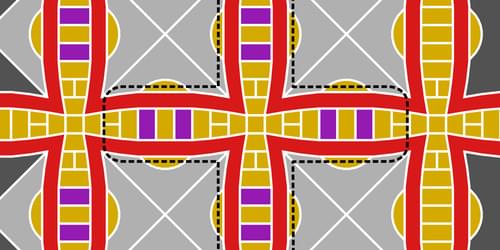A scheme that moves electromagnetically trapped ions around a 2D array of sites could aid development of scaled-up ion-based quantum computing.
Arrays of ions held in electromagnetic traps could eventually become powerful quantum computers, but as the number of ions increases, linear arrays become impractical. Rearranging the ions to achieve interactions between any specific pair becomes challenging, but now researchers have demonstrated a 2D scheme that does it more efficiently [1]. Using this approach, the full range of quantum operations is feasible with relatively simple applied voltages, and the researchers believe that it should soon find use in practical ion-based devices.
In trapped-ion quantum processors, single ions represent quantum bits (qubits). One of the main advantages of this technology is that individual ions can be moved around, says Robert Delaney of Quantinuum, a quantum-computing company. If rearranging ions—known as sorting—can bring every ion close enough to every other ion to allow pairwise quantum entanglement, the system has what is called all-to-all connectivity.
